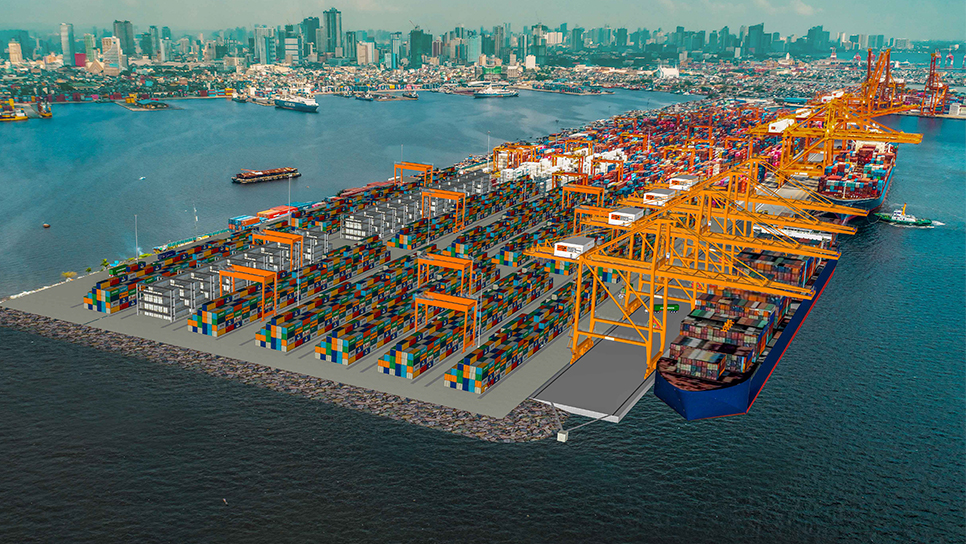International Container Terminal Services, Inc. is adding another berth to its flagship, the Manila International Container Terminal. The new berth, MICT’s eighth, is beyond the contractual commitments to the Department of Transportation and the Philippine Ports Authority.
DOTr Secretary Jaime Bautista, PPA General Manager Atty. Jay Daniel Santiago and ICTSI executive vice president Christian R. Gonzalez led the groundbreaking for the new berth. They were joined by DOTr Undersecretary for Legal Affairs Atty. Reinier Paul Yebra, MICT executive director Phillip Marsham, and DOTr Undersecretary for Maritime Elmer Francisco Sarmiento.
To be constructed in phases, Berth 8 will greatly add to the MICT’s capability to service foreign ultra-container vessels of up to 18,000 TEUs, a trend that has been growing in the past years. The new berth will create another 400 meters of quay along with 12 hectares of yard space that will bring an additional annual capacity of 200,000 TEUs. When completed, the MICT will have an annual capacity of 3.5 million TEUs, making the MICT the Philippines’ largest international gateway. The full build will give the MICT a total berth length of 2,300 meters, a 21 percent increase in berthing capacity.
Gonzalez said: “We are excited to announce the development of Berth 8, which enables us to be in the same league as the world’s top terminals. More importantly, this will bring significant economic benefits to the Philippines as we have the added capacity to handle growing trade volumes.”
He added: “We thank the DoTr and the PPA for supporting our initiatives and sharing our vision for a vibrant Philippine port and logistics industry that will translate to the overall prosperity of the country.”
Along with equipment, Berth 8 is estimated to cost P15 billion. MICT is currently capable of handling neo-Panamax ships through berths 6 and 7, which are operated by five quay cranes (QC). A sixth crane is scheduled to arrive in July 2023 and will be operational within the year. Berth 8 will operate with a minimum of four QCs – two of which will be delivered in 2025.
Since taking over the MICT in 1988, ICTSI has remitted in excess of Php96 billion to the government through the PPA. Over the same period, ICTSI has remitted to its host government – the City of Manila – over P3 billion in taxes. The company has invested in excess of P40 billion to modernize the MICT, handling over 47 million TEUs since 1988.
Aside from the construction of Berth 8, ICTSI has commenced the modernization of Berths 1 to 5 and their backup and yard areas. The project includes the installation of additional reefer racks to accommodate approximately 300 TEUs of reefer cargo.
Aside from infrastructure developments, ICTSI continues to invest in technology to make MICT’s operations more efficient.
ICTSI launched a mobile app last year that grants port users visibility over their cargo. The ICTSI App enables customers to monitor the status of their shipment across ICTSI’s network of terminals in the Philippines, which include MICT, NorthPort, Subic Bay International Terminals (SBITC), and Mindanao Container Terminal (MCT). Other ICTSI terminals in the country will soon be covered by the app.
ICTSI recently partnered with Intelligent E-Processes Technologies Corp. (IETC), the subsidiary of San Miguel Corporation that manages Autosweep RFID, to enable a faster, more seamless gate process for trucks at the Port of Manila. The partnership will enable RFID scanners at the terminal gates to read Autosweep tags and match the trucks’ plate numbers, resulting in faster gate access and process.

























